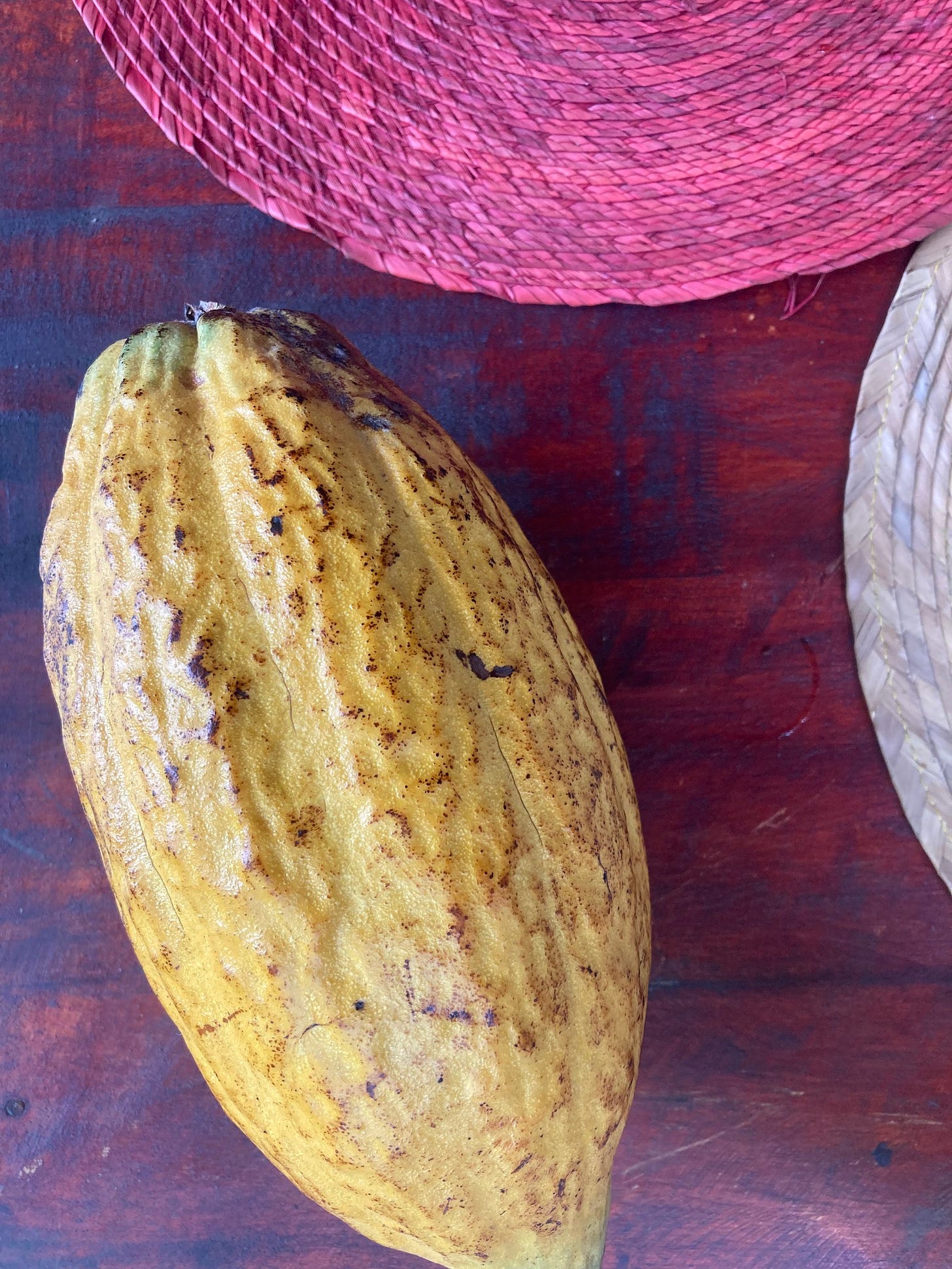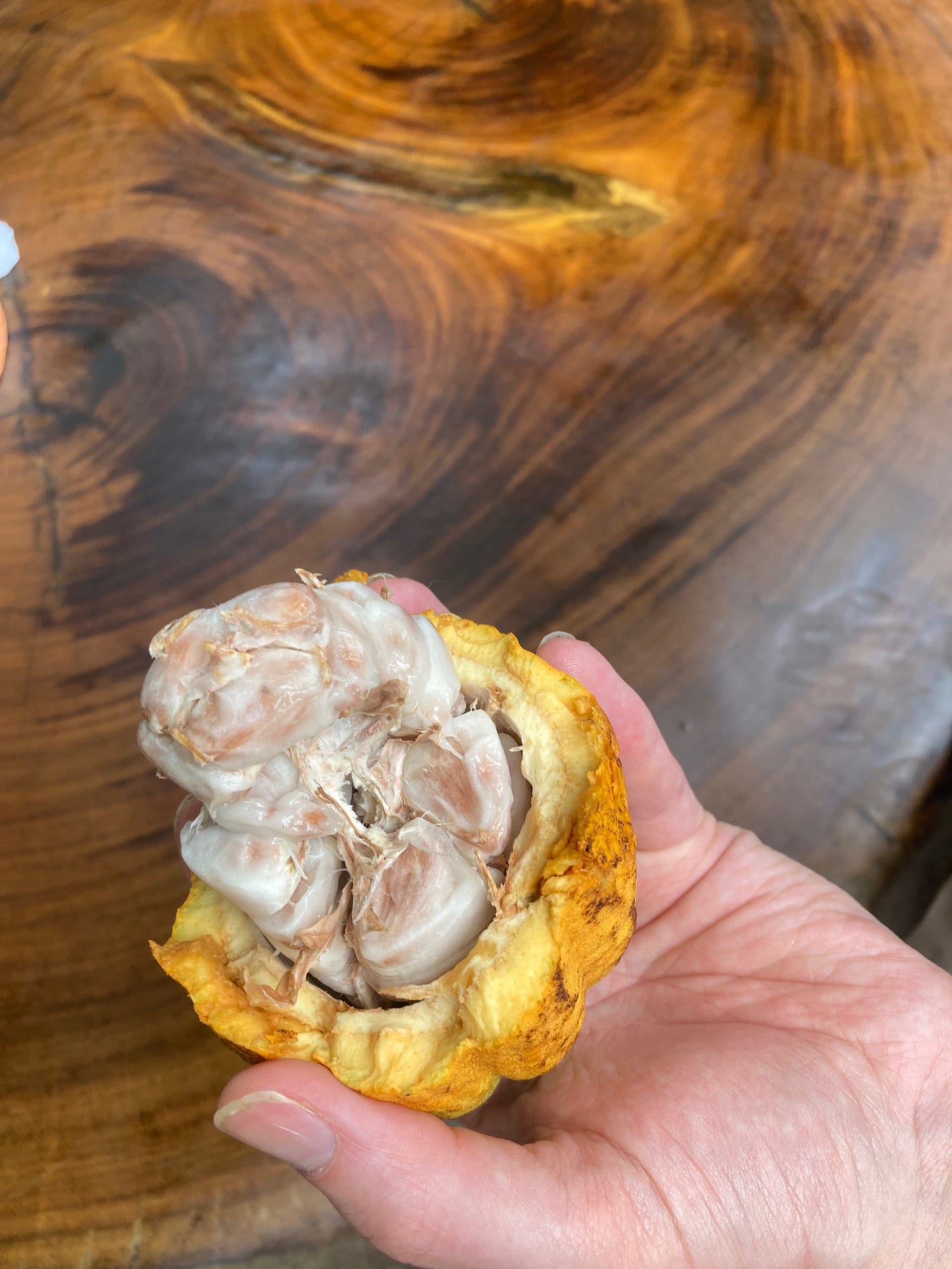Cacao: Roots, Ritual, and the Rhythm of the Heart
Exploring cacao’s roots, cultural context, energetic qualities, and a traditional way to drink it
A Moment in the Jungle
I'm currently in Costa Rica, surrounded by warmth, birdsong, and the slow rhythm of green life. Something in me softens here. I listen more. I feel more. I let my heart speak.
Part of that journey has brought me to cacao. Not just as a drink, but as a plant and a presence. One morning, I joined a small cacao tour tucked into the hills. Trees, banana leaves, fermentation baskets, and fire. I saw—smelled—tasted—the full journey from fruit to cup.
Cacao here is more than a product. It carries story, culture, and transformation. Like many plants, it invites us back: to body, to earth, to self.
But first: let’s begin with what cacao is—and what it isn’t.
Beyond the Ceremony Trend: What Cacao Was—and Is
In today’s wellness spaces, “cacao ceremonies” are everywhere: heart-opening circles with music, intention, and thick, chocolatey brews. But if we look at the Mayan cultures from which cacao originates, we find something quite different.
During a cacao tour, I was clearly told: there’s no historical evidence of anything resembling modern cacao ceremonies among the Maya. Cacao was sacred—but in another way. It was consumed on specific occasions: after births, during weddings, and in religious rituals. Sometimes it was mixed with chili, corn, or even blood (symbolically or literally). But there was no structured spiritual practice centered around cacao.
By contrast, among the Bribri people of Costa Rica, cacao still holds ceremonial significance—especially among women. It is part of rites of passage, such as the transition into womanhood, and is seen as a bridge between the physical and the spiritual, the individual and the collective.
So while modern cacao ceremonies may be beautiful and meaningful, they are not a direct continuation of indigenous Mayan practice. It’s important to acknowledge that difference.
From Fruit to Cup: The Making of Cacao
What struck me most was how hands-on and earth-connected the cacao-making process is.
First, the ripe fruit is opened by hand to reveal soft, sweet, white pulp surrounding the beans. These are placed in banana leaves—their undersides naturally host wild yeasts that start fermentation. Over several days, natural bacteria and yeast transform the beans’ sugars, creating complexity and reducing bitterness.
Then the beans are sun-dried and lightly roasted—often over open fire—bringing out the deep, familiar aroma. After roasting, they’re ground into a thick, dark paste: pure cacao, with nothing added.
You can blend this paste with water or plant milk and drink it just as it is: earthy, bold, and beautifully bitter.
A Plant That Nourishes – and Moves
Cacao isn’t just rich in taste—it’s rich in compounds that affect the body in subtle and powerful ways:
Keep reading with a 7-day free trial
Subscribe to Rhythms and root to keep reading this post and get 7 days of free access to the full post archives.






